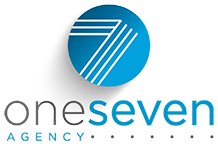By Eric Gladstone, Social Media Manager, One7 Communications
Some days, I wish hashtags would just go away. Okay, maybe that’s a bit dramatic. But seeing hashtags misused so often can make me want to #throwstuff. Hashtags like #thatswhatIsaid and #sopsychedformyselfie make my eye twitch. In fact, I wonder if hashtags are used incorrectly almost as much as they are used correctly.
But it’s not enough for me to just groan, post emojis and create my own brave responses like #stopsenselesshashtags, #myeyesarebleeding and my favorite: #browns (which nobody gets, but I’m ok with that).
Better idea: give me five minutes to explain the rights and wrongs of the tags of hash.
WRONG: Using hashtags as commentary. Specifically, as commentary on your previous commentary with made up hashtags.
RIGHT: Use your “commentary” as an invitation to join a conversation. For example, tweeting to Jimmy Fallon with your your #whydidIsaythat tweet to try and get mentioned on his Tonight Show segment. Or, something topical such as #blacklivesmatter.
WRONG: Expecting any made up hashtag to be seen. How do I put this gently? It’s not about you, it’s about them. I know, it’s magical to see that any words following a # become bolded, as if they are somehow more important. But if a tree hashtags itself in a forest, does anyone retweet it? Just because you have bolded a word #doesntmeananybodycares. Unless you are Beyonce and can expect thousands of people to catch onto your new trend, #stopmakinguphashtags and instead…
RIGHT: #findonepeoplearealreadyusing. Let me repeat that: find hashtags that are already trending. Hashtags, which came into use first on Twitter in 2007 (I won’t fascinate you with the details, but you can find them here) are meant to create subcategories for users to do quick searches, typically of trending topics. For example, if there’s a news story happening that people are commenting or reporting on, they might use #Gorillagate or #Election2016 expressly so that others interested in that topic will find their comment. You can also search for your brand, your competitor’s brands, your event or an event you participated in, or for whatever topic an audience you want is following.
WRONG: Choosing a hashtag because it sounds fun.
RIGHT: Choosing a hashtag that already has strong usage. Instagram has a great built-in shortcut to this, which lets you know just how popular a hashtag is as you start to type it. So if you are typing #foodismygod and it shows you first that just #food is the most popular option (it is), you can use that. But if that seems too general, you may keep going and find that #foodism pops up, and that’s pretty large too (726,000 uses right now). No, you don’t like that? OK, keep typing and when you get to #foodismy you’ll find #foodismylife is the top option, with 36,000 uses. Insist on using your own? Turns out, #foodismygod has only been used five times as of this writing. You have your work cut out for you.
WRONG: Creating a long hashtag. OK, you want your own hashtag, maybe for a private event or conversation. Please don’t settle on #katiegraduatesfromcollege2016 or #jamieandtomsfabulouswedding. The longer it is, the harder it will be for others to remember, and you know what else? Finger fatigue.
RIGHT: Research shows the best hashtags are actually six characters long. While that may not always be possible, shorter is definitely better. For the above, think #KatieRocks2016 or #JamieLovesTom. Maybe even use an emoji!
WRONG: Using hashtags only on Twitter. Hashtags can now be found on Instagram, Facebook, YouTube, Flickr, Tumblr, and Google+ and other social media. However, hashtag usage isn’t equivalent on all of them.
RIGHT: Twitter favors no more than two hashtags so choose wisely. Facebook is pretty much the same. Instagram by comparison, rewards you with long strings of hashtags, as users do searches relevant to a topic such as #modelsofinstagram, #foodporn or #nofilter. In fact, Instagram users posting 11 hashtags see the best results, although you’re likely to do pretty well with five, too. The limit is 30 per post–but if you are adding 29 hashtags to your posts, we may need to stage an intervention.
WRONG: Tagging your private post, expecting it to get more followers.
RIGHT: Unless you only want the hashtag to be seen among your followers, you must make your account, or that post (when that option is available) public.
WRONG: Tagging someone else’s post, thinking it will be seen by those following or searching that tag. The tag will hyperlink to the search, but the search won’t include that post.
RIGHT: If you want to add the hashtag to that post, you will have to repost it on your own account (it’s good etiquette to also tag the account you reposted from) with the hashtag in the comments.
Now get out there and tag the right way, you may be surprised by the results! #maythehashbewithyou
Disclaimer: This post is full of incorrect hashtag use for satirical purposes. #dontjudge

